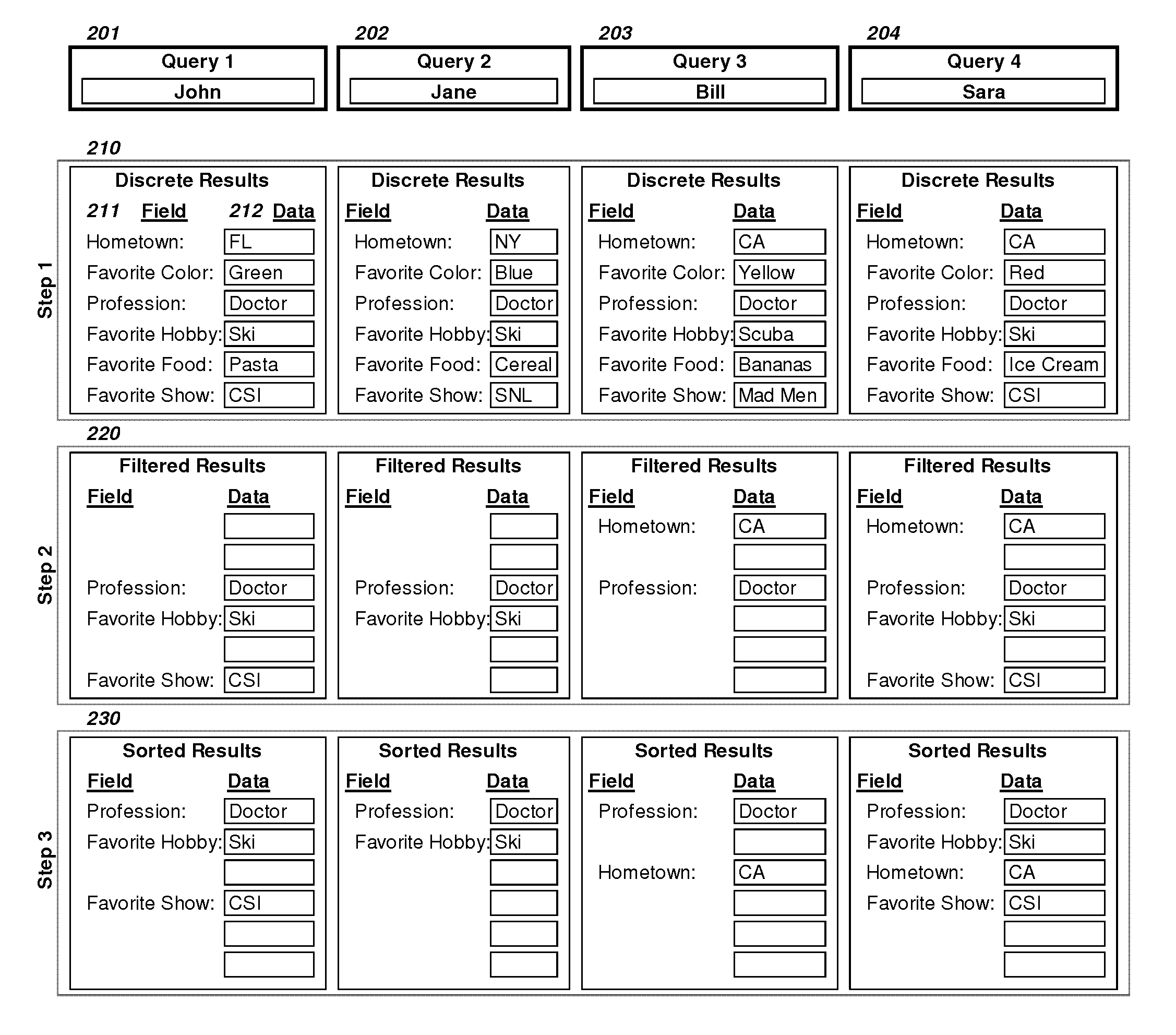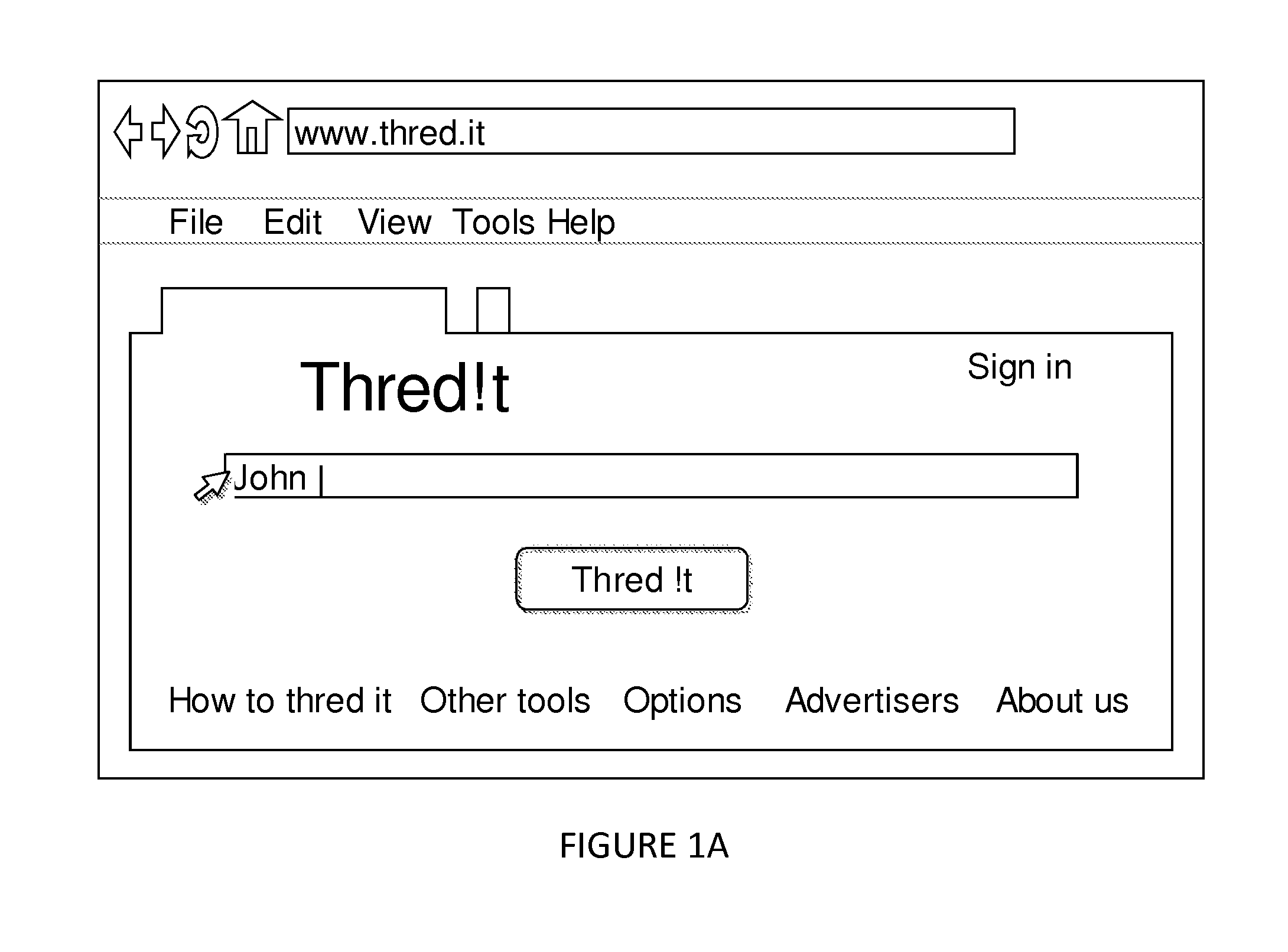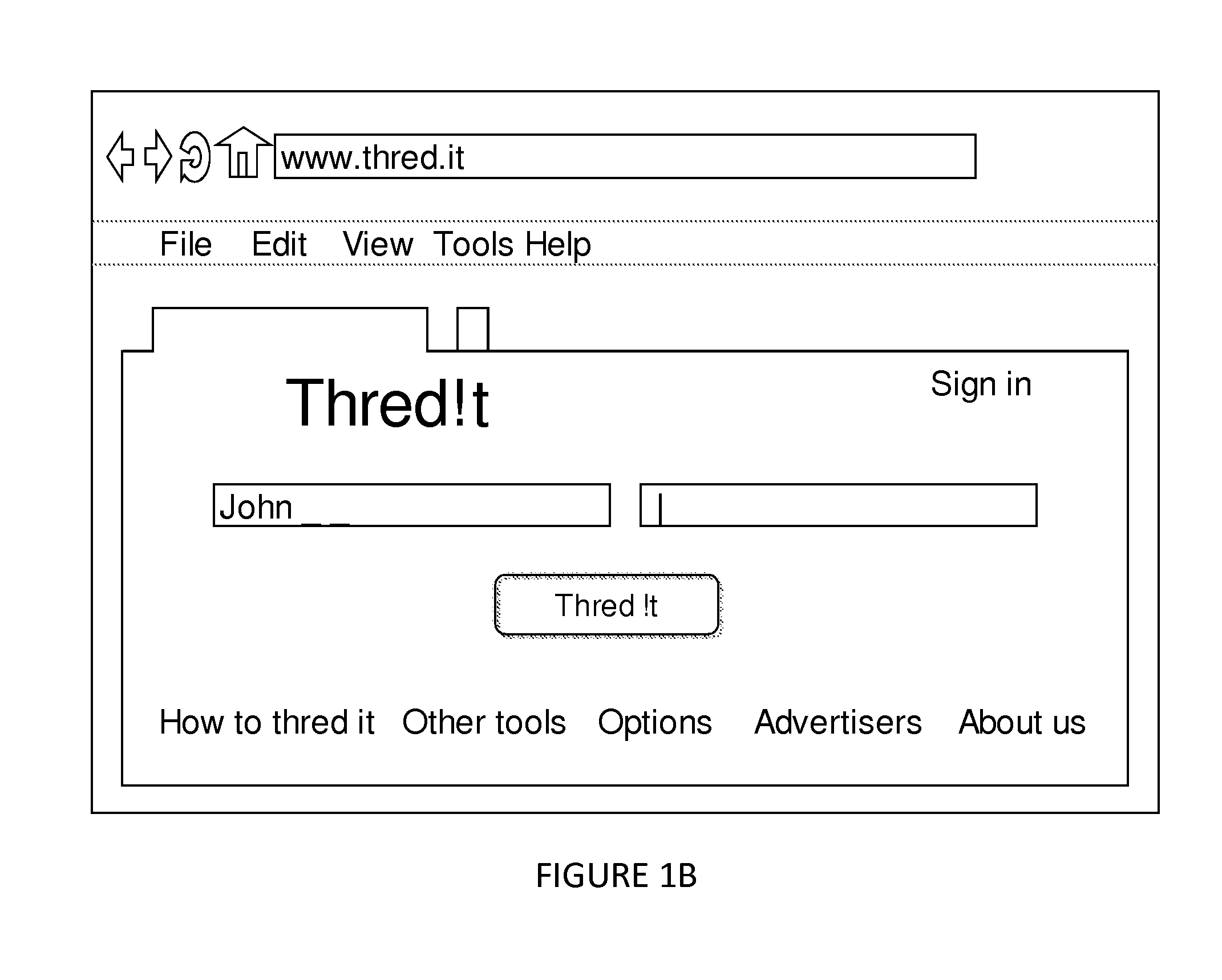Method of finding commonalities within a database
a database and commonality technology, applied in the field of database search, can solve the problems that users of this technology cannot have a preconceived idea of what they are searching, and the existing advertising sales placement technology does not allow advertisers to bid, so as to achieve the effect of less likely to invi
- Summary
- Abstract
- Description
- Claims
- Application Information
AI Technical Summary
Benefits of technology
Problems solved by technology
Method used
Image
Examples
Embodiment Construction
[0056]Electronic searching for information contained in a database is typically conducted by entering a query term or phrase into a search engine. Typically, the search query returns document results that are based on relevancy to the queried search term(s). The term documents, as used in this application encompasses files, records, pages, Internet sites, data entries, or any other terminology used to identify a unit of a database. With the growing use of the Internet and database technologies, query based searching has grown beyond simply searching databases contained locally within an organization, to searching file systems and external databases over the Internet due to its vast resources and wealth of information.
[0057]While search engines are most well known in the context of the Internet, their usefulness is much broader. Search engines may be used in other large networks, such as internal corporate or organizational networks (i.e., Intranets). Furthermore, search engines may ...
PUM
 Login to View More
Login to View More Abstract
Description
Claims
Application Information
 Login to View More
Login to View More - R&D
- Intellectual Property
- Life Sciences
- Materials
- Tech Scout
- Unparalleled Data Quality
- Higher Quality Content
- 60% Fewer Hallucinations
Browse by: Latest US Patents, China's latest patents, Technical Efficacy Thesaurus, Application Domain, Technology Topic, Popular Technical Reports.
© 2025 PatSnap. All rights reserved.Legal|Privacy policy|Modern Slavery Act Transparency Statement|Sitemap|About US| Contact US: help@patsnap.com



